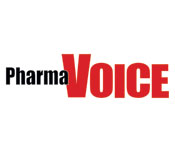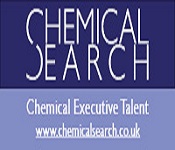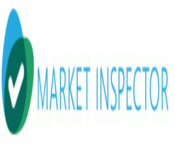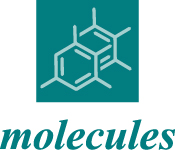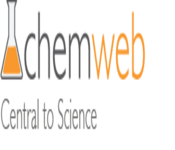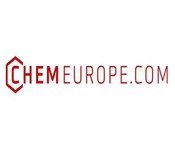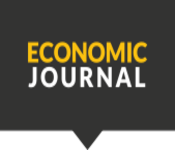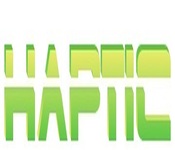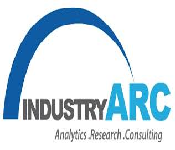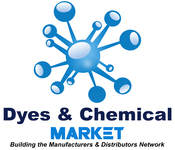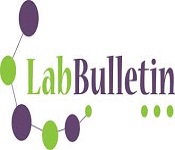analytical separationtechniques esc 2021
About Conference
Analytical Separation Techniques 2021 will be organizing webinars by offering a virtual platform to all academicians, researchers, industry professional, and scholars. Webinars will be scheduled on a wide range of topics and it will be helpful for the scientific fraternity to be connected while staying at their preferred place. Join the webinars organized by us and let the world know about your research and innovation.
EuroSciCon honoured to welcome all the participants for the upcoming CPD accredited International Conference on Analytical Separation Techniques and Environment Chemistry to be held from August 25-26, 2021 at Amsterdam, Netherland. The main focus of this Analytical Separation Techniques and Environment Chemistry 2021 conference is to fill up the knowledge gap by sharing the advanced research in Chemistry which is also integrated with advanced research. To attain in this goal this international conference is designed in such a way to display their ideas, theories, and analyses, innovations through Keynote presentations Plenary Presentations, Oral Talks, Poster presentations, Young Research Forum, Symposiums, Workshops, and Exhibitions.
Sessions
Track-1: Analytical chemistry
Analytical chemistry is the study of the separation, identification, and quantification of the Analytical chemistry is examining materials by separating them into their components and identifying all and the way much there's of every one. Analytical chemistry is that the science of obtaining, processing, and communicating information about the composition and structure of matter. Analytical chemists use their knowledge of chemistry, instrumentation, computers, and statistics to unravel problems in most areas of chemistry and for all types of industries. Analytical chemistry makes use of standards and error analysis. Analytical chemistry consists of classical, wet chemical methods and modern, instrumental methods.
Track-2: BioAnalytics
Bio analytical Techniques are specially associated with determine the concentration of drug within the biological matrices. It also deals with human clinical pharmacology, bioavailability, bioequivalence and non-human clinical pharmacology. Bio separation usually involves the separation of the subsequent physical forms.
• Bioenergy
• Bio separation
• Bio magnetism
• Biodiesel
Track-3:Cell separation techniques
Cell Separation Techniques is separation of 1 or more cell types from other cells. This cell separation is additionally mentioned as cell isolation or cell sorting. Cell isolation may be a process of isolating one or more specific cells from a heterogeneous mixture of cells.
Track-4:Chemometrics
Chemometrics is the investigation of extricating data from compound frameworks by information driven methods. Chemometrics is innately interdisciplinary, utilizing strategies much of the time utilized in the center information, explanatory teaches, for example, multivariate insights, connected arithmetic, and software engineering, so as to address issues in science, natural chemistry, drug, science and compound building.
Track-5:Catalysis
Catalysis is that the tactic of modifying a chemical process with the utilization of a catalyst. Catalysis is that the way toward expanding the speed of an artificial response by including a substance referred to as an impetus, which isn't expended within the catalysed response and may keep it up acting over and over. a uniform catalyst is one whose molecules square measure spread within an equivalent part (usually vapourish or liquid) because the reactant's molecules. A heterogeneous catalyst is one whose molecules aren't within an equivalent part because the reactant's, that square measure generally gases or liquids that square measure absorbable onto the surface of the solid catalyst.
Track-6: Chromatography
Chromatography plays a crucial role in many pharmaceutical industries and also within the chemical and food industry. Environmental testing laboratories generally want to spot for very small quantities of contaminants like PCBs in waste oil, and pesticides. The Environmental Protection Agency makes the tactic of chromatography to check beverage and to watch air quality. Pharmaceutical industries use this method both to organize huge quantities of extremely pure materials, and also to analyse the purified compounds for trace contaminants.
Track-7:Electrochemistry
Electrochemistry is that the study of electricity and the way it relates to chemical reactions. In electrochemistry, electricity is often generated by movements of electrons from one element to a different during a reaction referred to as redox or oxidation-reduction reaction. Electrochemistry is that the study of chemical processes that cause electrons to maneuverer.
Track-8:Electrophoresis
Electrophoresis is the movement of scattered particles with respect to a liquid affected by a Electrophoresis is that the movement of scattered particles in reference to a liquid suffering from a spatially uniform field. It’s the tactic for separation and analysis of macromolecules (DNA, RNA and proteins) and their fragments, supported their size and charge. Electrophoresis of emphatically charged particles (cations) is here and there called cataphoresis, while electrophoresis of contrarily charged particles (anions) is a few of the time called anaphoresis.
Track-9: Environmental Design
Environmental design is that the manner of addressing surrounding environmental parameters when devising plans, policies, programs, buildings, or products. Environmental design can also ask the applied arts and sciences handling creating the human-designed environment. In terms of a much bigger scope, environmental design has implications for the economic design of products: wind-electricity generators, innovative automobiles, solar-electric equipment, and different sorts of equipment could function examples. Currently, the term has expanded to use wind-electricity generators to ecological and sustainability issues.
Track-10: Environmental Science
Environmental science may be a multidisciplinary academic field both biological and knowledge sciences to the environmental study. The science fields that are incorporated into ecology science include geography, economics, and science. Philosophy and ethics are the 2 fields within the humanities that are included in ecology. Investigations are open on what shapes our world and also the environment during which we live, so as to understand the interaction between Earth's geology, atmosphere, biosphere, oceans, and human responses and roles.
Track-11: Environmental Geology
Environmental Geology unites the core foundation of ecology and places particular emphasis on the study of geology and executing it to real-world situations. It’s an engineering concerned with the sensible application of the idea of geology within the iron out of environmental problems. Environmental geology applies prediction and study of geologic complications like Earth materials, Landscape evaluation, Natural hazards, Environmental impact analysis and remediation.
Track-12: Environmental Eco System
A biological system may be a group of living beings in conjunction with the non-living parts. Biotic and abiotic parts are connected together through supplement cycles and vitality streams. Biological communities are controlled both by outside and inner variables. Biodiversity influences biological community work attempt to do the procedure of aggravation and progression.
Track-13: Earth and Geochemistry
Geochemistry is that the science that uses the apparatuses and standards of science to clarify the instruments behind major land frameworks, for e.g.: the Earth's covering and its seas. The investigation of the strong Earth and therefore the seas, and therefore the procedures that shape them, is principal to understanding the world and Environment as an advancing framework.
Track-14: Environmental Biotechnology
Environmental biotechnology is employed to see the natural environment. Environmental biotechnology could also imply that one attempt to harness biological (organic) process for commercial uses and exploitation. Molecular biotechnology is that the use of laboratory techniques to see and modify nucleic acids and proteins for applications in areas like human and animal health, agriculture, and also the environment.
Track-15:Food Chemistry
Food chemistry deals with the chemistry behind the biochemical nature of food, their properties and the way they're processed within the body. It involves the study of chemical components from proteins to carbohydrates and more. In food chemistry, we find out how different processing techniques affect a particular sort of food and also for tactics to reinforce the standard of food.
Track-16:Forensic Science
Forensic science could also be a mixture of two different Latin words forensic and science. it is also mentioned as criminalistics which is that the appliance of science to criminal and civil laws, mainly on the criminal side during criminal investigation.
Track-17:Nanotechnology
Nanotechnology are the study and application of extremely small things and may be used across all the opposite science fields, like chemistry, biology, physics, materials science, and engineering. The soonest, far reaching portrayal of nanotechnology alluded to the precise mechanical objective of accurately controlling iotas and particles for manufacture of macroscale items, additionally now alluded as sub-atomic nanotechnology.
Track-18:Organic&Inorganic Chemistry
Organic chemistry is that the study of molecules that contain carbon compounds. In contrast, chemistry is that the study of all compounds that don't contain carbon compounds. Chemistry may be a sub order of science that reviews the structure, properties and responses of natural mixes which contain carbon in covalent holding. Investigation of structure decides their synthetic creation and equation, its properties incorporates physical and substance properties and assessment of synthetic reactivity to grasp their conduct.
Track-19:Oil-Water Separation Techniques
In this sort of emulsion, water is that the internal dispersed or discontinuous phase, while oil is that the external or continuous phase. Separation by the various gravity of the 2 phases may be a very slow process, but are often accelerated by the help of chemicals. Non-ionic surfactants having both lipophilic and hydrophilic groups are mainly used as demulsifies.
Track-20:Pharmaceutical Techniques
Pharmaceutical analytical techniques affect the method or different processes to spot and/or quantify a substance, the components of a pharmaceutical solution or mixture or the determination of the structures of chemical compounds utilized in the formulation of pharmaceutical product. Pharmaceutical analytical techniques Journals utilize different processes to spot and/or quantify a substance.
Track-21:Spectroscopy Methods
Spectroscopy refers to a plethora of various techniques that employ radiation so as to get data on the structure and properties of matter, which is employed for solving a good sort of analytical problems. The intensity of interaction between these materials gives the info about the physical properties of a substance
Track-22:Waste Water Treatment
Wastewater is water that has been used and must be treated before it's released into another body of water, in order that it doesn't cause further pollution of water sources. Wastewater comes from a spread of sources. Everything that you simply wash down your toilet or rinse down the drain is wastewater. We will reuse the water by following some separation techniques like Physical water treatment, Biological water treatment, Chemical water treatment, and Sludge water treatment.
Market Analysis
Separation Techniques are used to separate particles of different or same phases. Techniques inherited to attain the separation phenomena of two or more distinct products from the mixture of substances. This separation process can be done with the help of techniques like chromatography, electrophoresis, mass spectrometry, spectroscopy, membrane separation, etc. The market analysis of separation technologies can be described as follows.
The global Membrane separation technology market is projected to reach USD 28.10 Billion by 2022 at a CAGR of 7.2%. The base year considered for the study is 2016 while the forecast period is from 2017 to 2022. Membrane separation technology is used to separate and purify a specific component from the rest of the mixture. This technology is widely used for commercial and industrial purposes. Certain properties of membrane separation technology, such as durability, porosity, permeability, stability, and selectivity, make it indispensable in various industrial applications. The membrane separation technology is widely used in water & wastewater treatment, industrial, laboratory, medical, food & beverages, and research applications to purify, concentrate, sterilize, or separate samples.
The global chromatography instruments market is projected to be valued at USD 7.86 Billion in 2017 and is expected to grow at a CAGR of 6.9% to reach to USD 10.99 Billion by 2022. The growth of the overall chromatography instruments market can be attributed to the rising food safety concerns, increasing use of chromatography tests in the drug approval process, and growing popularity of hyphenated chromatography techniques.
Mass spectrometry is an analytical technique used to identify compounds present in a sample by measuring the mass-to-charge ratio. The market is segmented based on platform and application. The mass spectrometry market, by platform, is segmented into hybrid mass spectrometry, single mass spectrometry, and other mass spectrometry. The mass spectrometry market is expected to reach USD 7,279.1 Million in 2020 from USD 4,919.1 Million in 2015 at a CAGR of 8.1%.
The process spectroscopy market is expected to grow to USD 22.04 Billion by 2020, at a CAGR of 8.72% between 2015 and 2020 and the global molecular spectroscopy market is projected to be valued at USD 4.68 Billion in 2017 and is expected to grow at a CAGR of 6.6% to reach to USD 6.85 Billion by 2022. The growth of the overall molecular spectroscopy market can be attributed to the growing food safety concerns, the growth of the pharmaceutical and biotechnology industry, application of molecular spectroscopy in environmental screening and technological advancements in molecular spectroscopy.
The global electrophoresis market is expected to reach USD 2.15 Billion in 2017, growing at a CAGR of 5.4% during the forecast period. Several factors, such as the growth in funding for research on electrophoresis techniques, increasing the number of research collaborations between market players and academic institutions, increasing use of capillary electrophoresis (CE) with mass spectroscopy (MS), and growing focus on next-generation sequencing research are driving the growth of the electrophoresis market. The base year considered for the study is 2016 and the forecast period includes 2017 to 2022. The future growth prospects for the protein crystallization market are optimistic , which is estimated to grow at a CAGR of 10.1% to reach a worldwide market of $1,253 million by 2018
The global process analyzers (liquid & gas) market is expected to grow to USD 4.98 Billion by 2020, at an estimated CAGR of 5.50% between 2015 and 2020. This market is driven by the increase in the shale gas production in the U.S. In addition, the gas chromatography market is projected to reach USD 3.90 Billion by 2020, at a CAGR of 8.60% between 2015 and 2020.
The global gas separation membranes market is projected to reach USD 2.61 Billion by 2022 at a CAGR of 7.2% forecast period. The base year considered for the study is 2016 while the forecast period is from 2017 to 2022.
The global air separation plant market is projected to reach USD 7.27 Billion by 2026, at a CAGR of 5.3% from 2016 to 2026. The market is expected to witness growth in the coming years owing to the increasing demand for iron & steel around the world, coupled with stringent policies and measures taken by countries to promote the safe use of air separation methods for industrial applications.

The global analytical standards market is projected to reach USD 1.73 Billion by 2022 from USD 1.27 Billion in 2017, at a CAGR of 6.3%. And the global analytical laboratory services market, by a public health organization, is projected to reach USD 333.8 Million by 2021 from USD 202.8 Million in 2016, at a CAGR of around 10.5% during the forecast period. The overall market, by a public health organization, is positively impacted by factors such as the growing expenditure on drugs and medical devices by public health organizations, government initiatives to strengthen analytical testing capabilities, increasing number of drug approvals & clinical trials, and rising demand for specialized analytical testing services.
The global healthcare, analytical testing services market is estimated to grow at a CAGR of 11.3% from 2017 to 2021 to reach USD 4.13 Billion by 2021. The growing demand for analytical services for biologics and large-molecule drugs, increasing outsourcing of analytical testing by pharmaceutical companies, rising demand from the nutraceutical industry and increasing acceptance of the QbD (Quality by Design) approach in pharma research/manufacturing are the major factors driving the growth of the global market.

Market Analysis
Separation Techniques are used to separate particles of different or same phases. Techniques inherited to attain the separation phenomena of two or more distinct products from the mixture of substances. This separation process can be done with the help of techniques like chromatography, electrophoresis, mass spectrometry, spectroscopy, membrane separation, etc. The market analysis of separation technologies can be described as follows.
The global Membrane separation technology market is projected to reach USD 28.10 Billion by 2022 at a CAGR of 7.2%. The base year considered for the study is 2016 while the forecast period is from 2017 to 2022. Membrane separation technology is used to separate and purify a specific component from the rest of the mixture. This technology is widely used for commercial and industrial purposes. Certain properties of membrane separation technology, such as durability, porosity, permeability, stability, and selectivity, make it indispensable in various industrial applications. The membrane separation technology is widely used in water & wastewater treatment, industrial, laboratory, medical, food & beverages, and research applications to purify, concentrate, sterilize, or separate samples.
The global chromatography instruments market is projected to be valued at USD 7.86 Billion in 2017 and is expected to grow at a CAGR of 6.9% to reach to USD 10.99 Billion by 2022. The growth of the overall chromatography instruments market can be attributed to the rising food safety concerns, increasing use of chromatography tests in the drug approval process, and growing popularity of hyphenated chromatography techniques.
Mass spectrometry is an analytical technique used to identify compounds present in a sample by measuring the mass-to-charge ratio. The market is segmented based on platform and application. The mass spectrometry market, by platform, is segmented into hybrid mass spectrometry, single mass spectrometry, and other mass spectrometry. The mass spectrometry market is expected to reach USD 7,279.1 Million in 2020 from USD 4,919.1 Million in 2015 at a CAGR of 8.1%.
The process spectroscopy market is expected to grow to USD 22.04 Billion by 2020, at a CAGR of 8.72% between 2015 and 2020 and the global molecular spectroscopy market is projected to be valued at USD 4.68 Billion in 2017 and is expected to grow at a CAGR of 6.6% to reach to USD 6.85 Billion by 2022. The growth of the overall molecular spectroscopy market can be attributed to the growing food safety concerns, the growth of the pharmaceutical and biotechnology industry, application of molecular spectroscopy in environmental screening and technological advancements in molecular spectroscopy.
The global electrophoresis market is expected to reach USD 2.15 Billion in 2017, growing at a CAGR of 5.4% during the forecast period. Several factors, such as the growth in funding for research on electrophoresis techniques, increasing the number of research collaborations between market players and academic institutions, increasing use of capillary electrophoresis (CE) with mass spectroscopy (MS), and growing focus on next-generation sequencing research are driving the growth of the electrophoresis market. The base year considered for the study is 2016 and the forecast period includes 2017 to 2022. The future growth prospects for the protein crystallization market are optimistic , which is estimated to grow at a CAGR of 10.1% to reach a worldwide market of $1,253 million by 2018
The global process analyzers (liquid & gas) market is expected to grow to USD 4.98 Billion by 2020, at an estimated CAGR of 5.50% between 2015 and 2020. This market is driven by the increase in the shale gas production in the U.S. In addition, the gas chromatography market is projected to reach USD 3.90 Billion by 2020, at a CAGR of 8.60% between 2015 and 2020.
The global gas separation membranes market is projected to reach USD 2.61 Billion by 2022 at a CAGR of 7.2% forecast period. The base year considered for the study is 2016 while the forecast period is from 2017 to 2022.
The global air separation plant market is projected to reach USD 7.27 Billion by 2026, at a CAGR of 5.3% from 2016 to 2026. The market is expected to witness growth in the coming years owing to the increasing demand for iron & steel around the world, coupled with stringent policies and measures taken by countries to promote the safe use of air separation methods for industrial applications.

The global analytical standards market is projected to reach USD 1.73 Billion by 2022 from USD 1.27 Billion in 2017, at a CAGR of 6.3%. And the global analytical laboratory services market, by a public health organization, is projected to reach USD 333.8 Million by 2021 from USD 202.8 Million in 2016, at a CAGR of around 10.5% during the forecast period. The overall market, by a public health organization, is positively impacted by factors such as the growing expenditure on drugs and medical devices by public health organizations, government initiatives to strengthen analytical testing capabilities, increasing number of drug approvals & clinical trials, and rising demand for specialized analytical testing services.
The global healthcare, analytical testing services market is estimated to grow at a CAGR of 11.3% from 2017 to 2021 to reach USD 4.13 Billion by 2021. The growing demand for analytical services for biologics and large-molecule drugs, increasing outsourcing of analytical testing by pharmaceutical companies, rising demand from the nutraceutical industry and increasing acceptance of the QbD (Quality by Design) approach in pharma research/manufacturing are the major factors driving the growth of the global market.

Highlights & Benifits
- Keynote Sessions on Separation Techniques
- Oral presentations on Separation Techniques
- Young Researcher Forums
- Poster Presentations on Separation Techniques
- Video Presentations on Separation Techniques
- E-poster Presentations on Separation Techniques
- Honorable Guests Presentations
- Exhibitions on Separation Techniques
- Free Abstract Publication & DOI
- Free Lunch and Networking
- Questionnaires on Separation Techniques
- International Workshops and Symposia on latest trends
- Top Industries & Organization Representation from all over the world
Learn More
Top Separation Techniques Universities World wide:
Europe Separation Techniques Universities:
USA Separation Techniques Universities:
Asia Separation Techniques Universities:
Africa Separation Techniques Universities:
Separation Techniques Societies:
Separation Techniques Conferences:
Separation Techniques Companies:
Separation Techniques Companies in Europe:
Separation Techniques Companies in USA:
Separation Techniques Companies in Asia and Middle East:
Separation Techniques jobs in Europe:
Separation Techniques Jobs in USA:
Separation Techniques Jobs in Asia and Middle East:
List of Separation Techniques Products:
Past Conference Report

Thanks for participating in Analytical Separation Techniques 2021
Analytical Separation Techniques 2021
The Analytical Separation Techniques and Environment Chemistry 2021 was held on August 25-26, 2020 in Amsterdam, Netherland with the presence of professional researchers, business delegates, scientists involved in the development of high-quality education & research in all aspects. Please check the website: Analytical Separation Techniques 2021 Conference Photographs
Analytical Separation Techniques 2021 witnessed an amalgamation of peerless speakers who enlightened the crowd with their knowledge and confabulated on various topics related to the field of Separation Techniques. The highly exalted conference hosted by EuroSciCon was marked with the attendance of renowned and brilliant researchers, business delegates and talented student communities representing more than 30 countries around the world. The conference has tried grounding every aspect related to Analytical Separation Techniques, covering all the possible research areas.
The conference aimed a parallel rail with theme “Launching the Innovative Ideas and Technologies of Separation Techniques”. The meeting engrossed a vicinity of cognizant discussions on Recent Developments in Separation Techniques, Recent Upgrades in Sample Preparation Process, Chromatography, Desalination & Wastewater Treatment Techniques, Separation Techniques in Environmental Chemistry, Analytical Chemistry, Mass Spectrometry, Spectroscopic Methods in Separation Techniques, Separation Techniques and Applications, Membrane Separation Techniques, Separation Techniques in Clinical/Pharmaceutical Chemistry, Separation Techniques in Chemical Engineering, New Instrumentation and Multidimensional Separations, Separation Techniques in Organic Chemistry, Separation Techniques used in Nanotechnology. The three days event implanted a firm relation of upcoming strategies in the field of Separation Techniques with the scientific community. The conceptual and applicable knowledge shared, will also foster organizational collaborations to nurture scientific accelerations.
We are thankful to all our speakers for encouraging and supporting us to conduct the conference and catapulting the same to the pinnacle of success.
We would like to thank our Organizing Committee Members Dr. Martin Schimpf, Boise State University, USA, Dr. Fawzi Banat, Khalifa University, UAE & Dr. Mustafa Tuzen, Gaziosmanpasa University, Turkey for their support throughout the conference without your cooperation which lead us to the grand success of Separation Techniques 2019 Conference
The Organizing Committee would like to thank the moderator: Dr. Simona Lavric, Melamin d.d. Kocevje, Slovenia for his valuable contribution which resulted in smooth functioning of the conference.
We would also like to thank our Poster judge Dr. Zhang Jinlan, Institute of Materia Medica CAMS & PUMC, China for the evaluation of Poster Presentations.
The meeting was embarked with an opening ceremony followed by Keynote Sessions and followed by a series of lectures delivered by Honorable Guests and members of the Keynote forum. The highlights of the meeting were the eponymous lectures, delivered by:
Jonathan W Cooper, National Institute of Health, USA
Jun Zhang, Harbin Institute of Technology, China
Tracy Bantegui, Cerahelix Inc, USA
Fawzi Banat, Khalifa University, UAE
Miloš Netopilík, Institute of Macromolecular Chemistry AS CR, Czech Republic
Xindu Geng, Institute of Modern Separation of Science Northwest University, China
Dietmar Schwahn, Technische Universität München, Germany
Olga A Dalnova, National University of Science and Technology MISiS, Russia
Vasilina V Eskina, National University of Science and Technology MISiS, Russia
Zhang Jinlan, Institute of Materia Medica CAMS & PUMC, China
Su Xu, National Tsing Hua University, Taiwan
Mustafa Tuzen, Gaziosmanpasa University, Turkey
Yoram Oren, Ben-Gurion University of the Negev, Israel
Axel Vansteene, Université Pierre et Marie Curie, France
María Ramos Payán, University of Sevilla, Spain
Saoussen Hammami, Monastir University, Tunisia
Junsheng Yuan, Hebei University of Technology, China
Yingying Zhao, Hebei University of Technology, China
Devender Thayar Seshadri, Indofil Industries Limited, India
Narendra Hanumanta Petha, Indofil Industries Limited, India
Poster competition also held for the young scientists and the best poster presenter has been awarded by the Dr. Zhang Jinlan, Institute of Materia Medica CAMS & PUMC, China.
Separation Techniques 2019 had an effective networking session, which enables the professionals and scientists to get involved & enlightened them in all perspectives. We also like to thank all the delegate professionals from various countries like Slovenia, Saudi Arabia, China, South Korea, Qatar, Slovakia who attended the conference shared their industrials experiences in networking sessions. Please check the website: Separation Techniques 2019 Conference Photographs to visualize the conference photographs
EuroSciCon is prerogative to thank the Organizing Committee Members, Keynote speakers and Chairs on transcribing the plenary sessions in a diversified and variegate manner to make this conference an enviable artifact.
Separation Techniques 2019 would not have reached the pinnacle if not with the support of International, multi-professional steering committee and coordination of Insights in Archives in Chemical Research, Der Chemica Sinica, International Journal of Drug Development and Research.
With the grand success of Separation Techniques 2019, we are glad to announce our next upcoming conference “International Conference on Analytical Separation Techniques and Environment chemistry” which is going to be held in London, UK during September 24-25, 2020 on the theme https://analytical-separationtechniques.euroscicon.com/
Bookmark your dates…
Hoping to meet you again coming year at Amsterdam!!!

